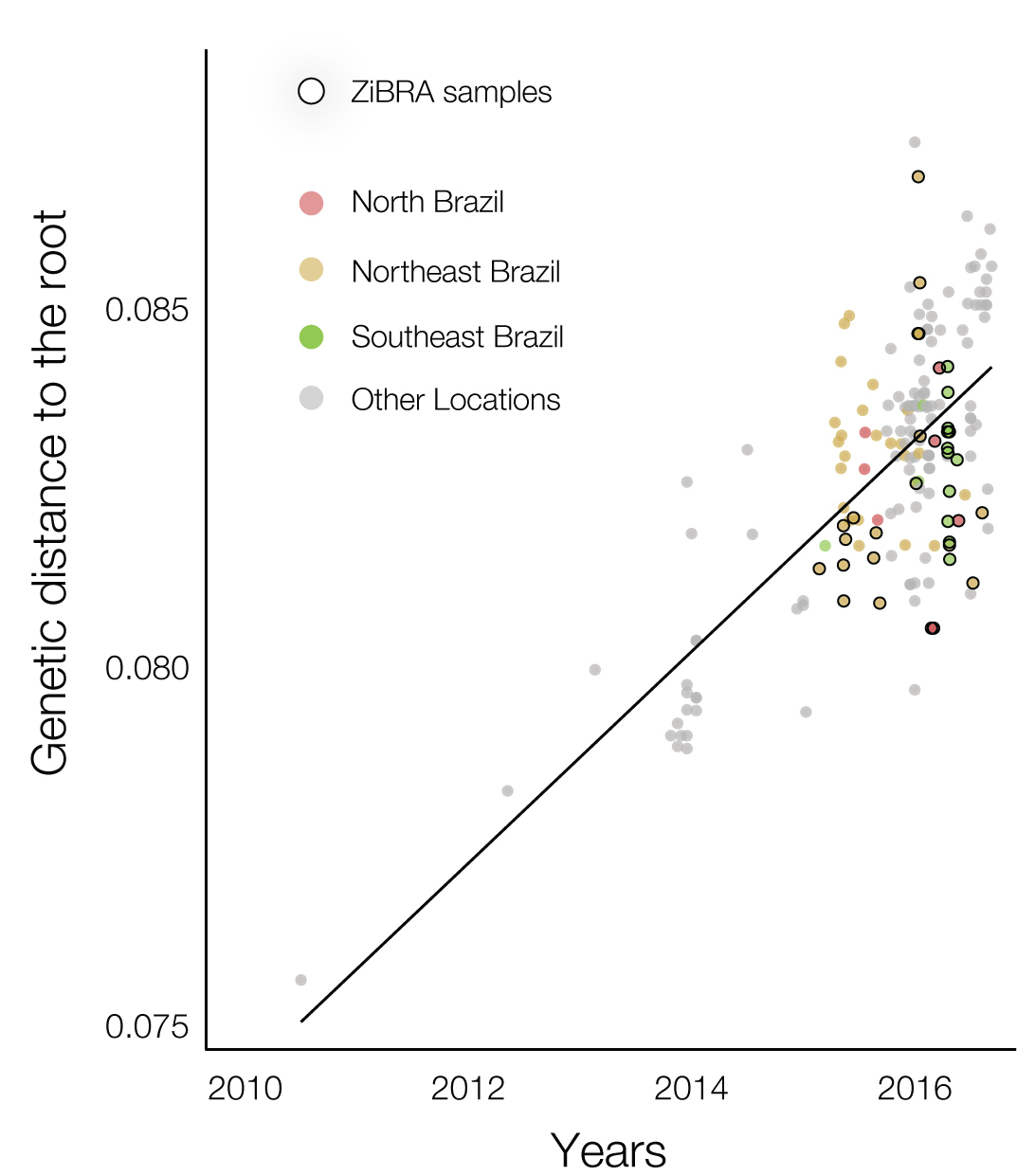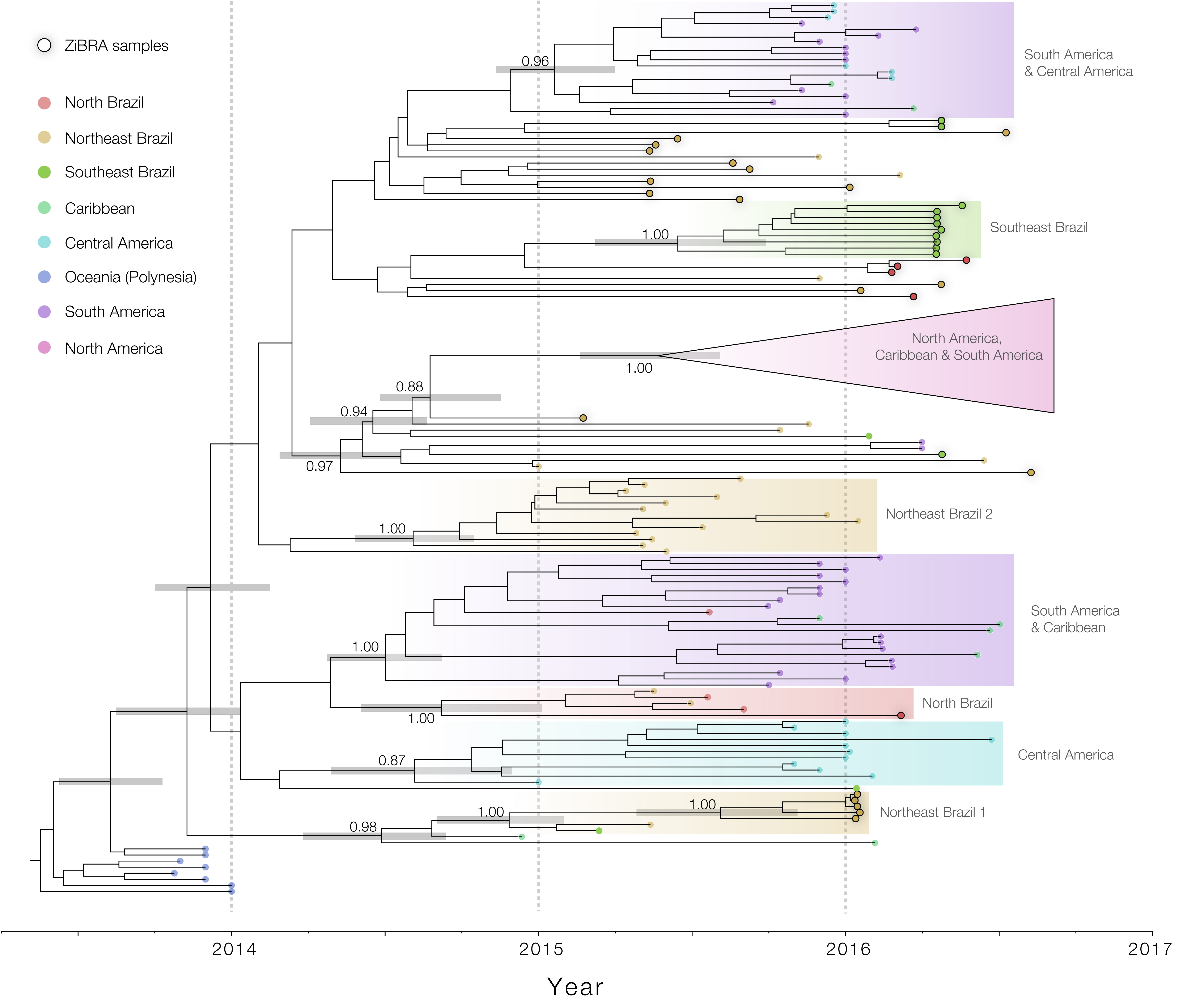The ZiBRA project has now generated 36 new complete and near-complete genomes of Zika virus from different federal states and regions in Brazil, all sequenced using MinION nanopore sequencing. This was done in collaboration with the University of Sao Paulo, FioCruz Bahia, FioCruz Recife, Instituto Evandro Chagas, the Brazilian Ministry of Health (the complete list of collaborators & genetic data & description of the protocol by @j_quick and @n_j_loman’s can all be found in the ZiBRA website. Also, an overview of the project was just published here.
The correlation between genetic distances from tips to the root and sample collection dates was very strong (R^2=0.94, slope=1.37e-03) (Fig. 1). This confirms the very strong temporal signal of ZiKV that was previously reported here with far less genomes, and suggests good quality sequence data and no mislabelling/contamination.
Our dated phylogenetic reconstruction reveals spatial structure at the regional level and also at the within-country level (Fig. 2; horizontal bars indicate 95% Bayesian credible intervals for the clade’s TMRCA). Specifically, we find 8 well-supported clades (posterior probably >0.85, no. sequences >5). Two of these clades are predominantly composed by strains from the Northeast region of Brazil (represented here by Bahia, Rio Grande do Norte, Paraiba and Pernambuco states; note that the “Northeast Brazil 2” clade is the same as Clade B in Naccache et al EID 2016), 1 from North Brazil (Para and Tocantins states) and another predominantly from Southeast Brazil (Sao Paulo state). These findings also support that extensive diversity of Zika virus in Brazil already in 2014, and suggest that the virus may have been introduced through the Northeast region of Brazil, in agreement with the earliest cases being identified there in March 2015.
Importantly here we reported genome data from a sample collected in February 2015 from an individual residing in Natal, capital city of the Rio Grande do Norte state located in the Northeast region. This predates the first confirmed cases of autochthonous transmission of Zika virus in Brazil. Pre-2015, historical Zika virus genome data could provide direct evidence for the early diversification of ZIKV in Brazil.

